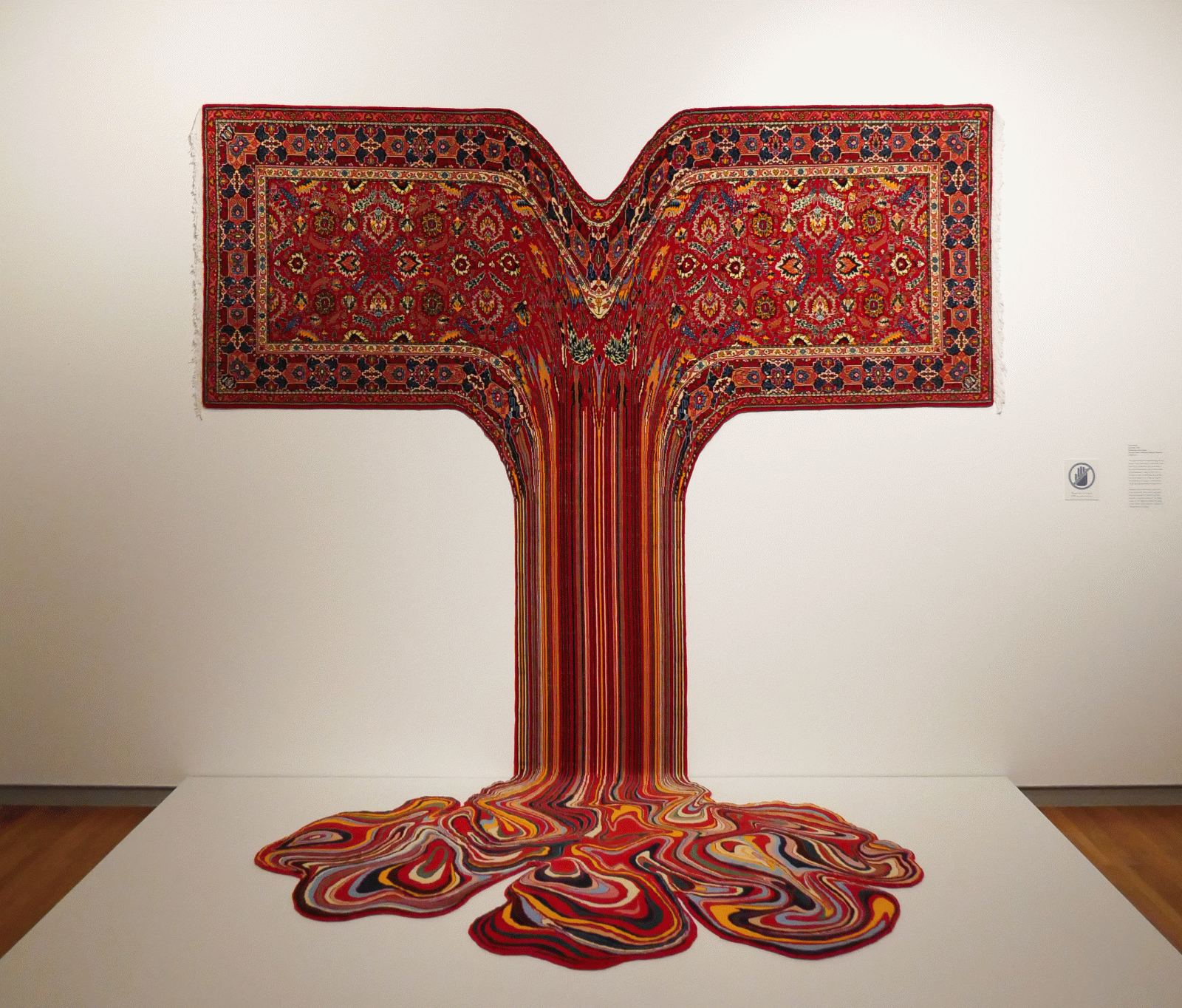Research
From Representation to Presence: Reconstituting the Islamic Art Museum through Performing and Contemporary Arts
Philip Geisler

Faig Ahmed: Gautama (2017), Exhibition Display Dissolving Order at the Aga Khan Museum, Toronto, 2020. Photo: Philip Geisler. Courtesy of Sapar Contemporary, Faig Ahmed, and Collection Majudia
Since the early 2000s, many Islamic art museums and galleries across the globe have reorganized their permanent displays and several museums have been newly established. During the same period, methodological interventions building on poststructuralist and postcolonial theory began to challenge long-standing formal and regional categories defining the field of Islamic art history. These new developments have impacted the display strategies of new museums and exhibitions of Islamic art. As part of these debates, a number of museums and galleries have recently extended their profile as possessors and conservators of objects to incorporate intangible forms of culture in new performing arts programs. Some museums have started to collect and display works of modern and contemporary artists under the rubric of Islamic art, as well. The objective of this project is to trace the genealogy of how dance, music, performance art, and spoken word have become a part of Islamic art museum programs in Europe and North America and to suggest some interpretive approaches of how this has begun to transform museum institutions and narratives.
The project argues that epistemological decentralization in the field of art history, the institutionalization of immaterial heritage in the 1990s, and cultural initiatives responding to the events of 9/11 have led to a shift away from object-based representationalism in museum practice. In combination with new permanent displays, this has transformed Islamic art museums and galleries into central sites for the configuration of contemporary cultural ideologies, including multiculturalism and secularism, on levels from the regional to the national. Focusing on the programs of the Aga Khan Museum in Toronto, the Museo de la Alhambra in Granada, and some additional institutions, the project questions the extent to which displays of human-centered and embodied practices effectively serve to reconstitute museum narratives by enabling institutions to navigate between humanization and discourses of art, material culture, and heritage.
This project is part of the Research and Fellowship Program 4A Laboratory: Art Histories, Archaeologies, Anthropologies, Aesthetics, a cooperation between the Kunsthistorisches Institut in Florenz and the Stiftung Preußischer Kulturbesitz.


